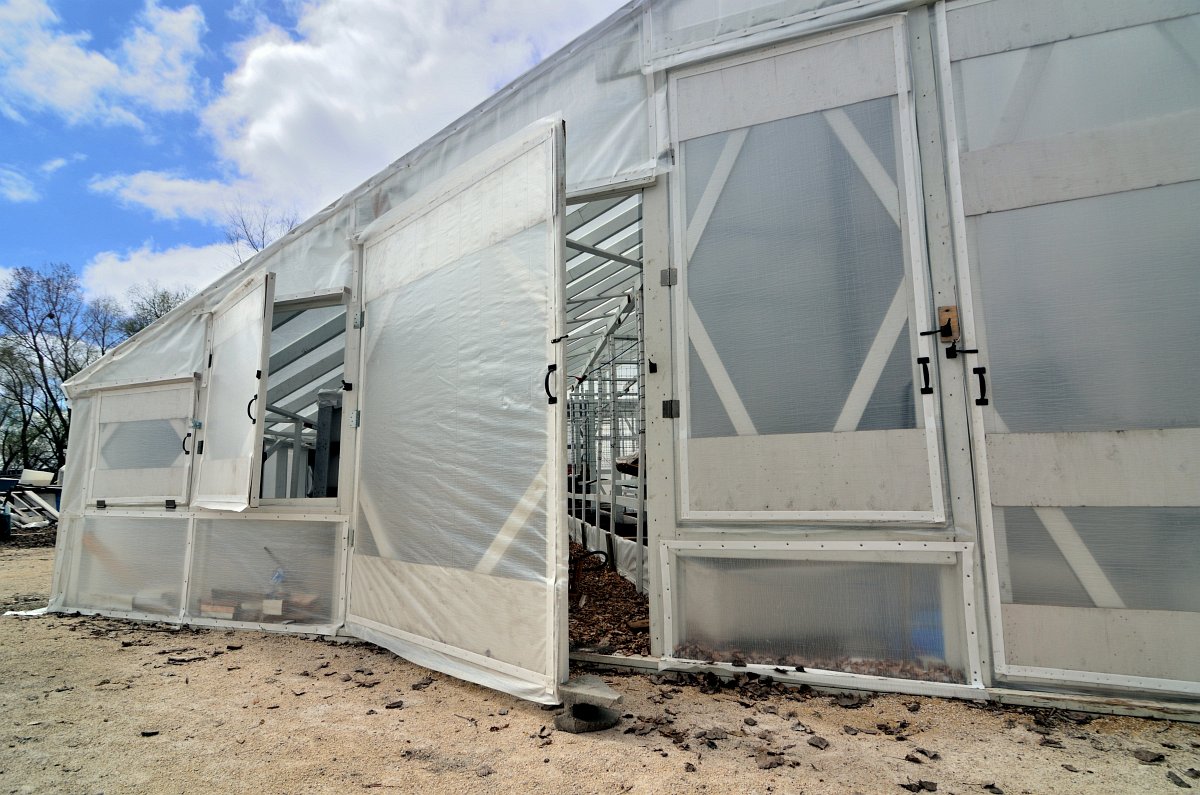help & information
Prolong Your Poly Life
Vent The Heat — Always!
The top of our lean to greenhouse easily reaches 160 degrees if not vented. Excessive heat will cut your poly life, and your plants. On a hot, clear, windless day opening your door is not enough. You need overhead vents (heat rises) and lower vents to let in cold air. Whereas commercial operators always heavily ventilate (mainly by fans) novices continually underestimate the damage poly and plants suffer due to heat. A plant can be under heat stress before it wilts.
More detailed help about venting and fans on our fan sheet are available on request. To have the information mailed to you, please write us and enclose a self-addressed envelope. See our catalog page for more details.
Paint The Rafters White
White or silver is best. It will reflect the heat keeping the poly cooler thus prolonging its life. White also reflects light on silver into the greenhouse. NEVER use black, brown, or colored paint on any wood or metal if it contacts the poly. Paint it white and only white! Please! White paint reflects heat and light so that poly is cooler and the greenhouse is brighter for all those sun-loving plants you are growing. It also looks better and helps preserve the wood.
Rafter Angles
For snow to slide off by itself, I feel 65-70 degrees up from horizontal is the MINIMUM angle. In winter, 65-70 degrees is close to the ideal angle to catch the maximum amount of sun in southern Canada and the northern States. The "Brace" design is ideal for this. (Operators of large commercial greenhouses don't worry so much about the "correct" angle due to the large area and the use of artificial heating). By the way, if you use steep angled rafters, they can be farther apart, because snow loading will be less. (Snow slides off better from steep roofs.) But brace them to prevent movement.
Rafter Spacing and Bracing
If you get extreme winds, you may want 2 foot spacing on rafters, though lighting will be reduced a bit. In average wind areas woven poly has been used successfully on steep rafters 6 feet apart. I get strong winds and use 8 foot spacing, but I use steep rafter angles and I cross-brace. Cross-brace all long rafters to prevent vibration and movement of rafters in strong winds.
Reduce Abrasion
Abrasion always occurs as poly rubs back and forth over the rafters due to winds. Our woven poly is more resistant to abrasion than regular poly due to its thickness, high-density weave and resistance to expansion and contraction. However, if the rafters are rough, it will last longer when you wrap the rafters and braces with poly, or nail our cinchstrap on rough lumber. If the rafters are rough, sand them smooth to eliminate splinters and sharp corners.
Install Tightly as a Drum
Although woven poly's weave is resistant to thermal expansion due to the dense weave it still expands a little when hot. So if at all possible install on a warmer day, it will then tighten more when it cools, thus resisting destructive flapping. But I have installed on freezing weather. If you use our Polyfastener then the poly can be removed at any time, re-tightened and then re-inserted. However if you install tightly the first time you will not have to re-tighten.
Remove The Cover (Optional)
Some, especially in the south, remove the poly part of the year. Keep poly on the greenhouse if the night temperatures drop below 70 degrees F / 21 degrees C. if you want optimal plant growth.
[an error occurred while processing this directive] [an error occurred while processing this directive]